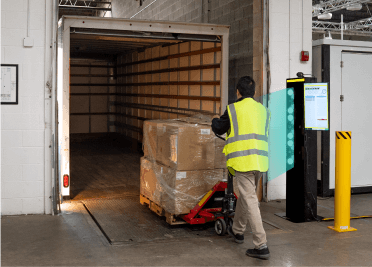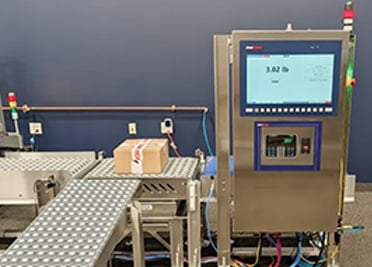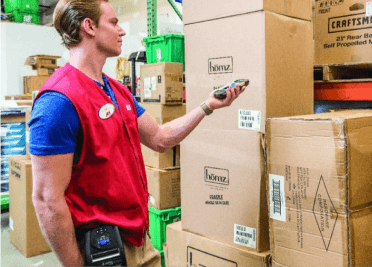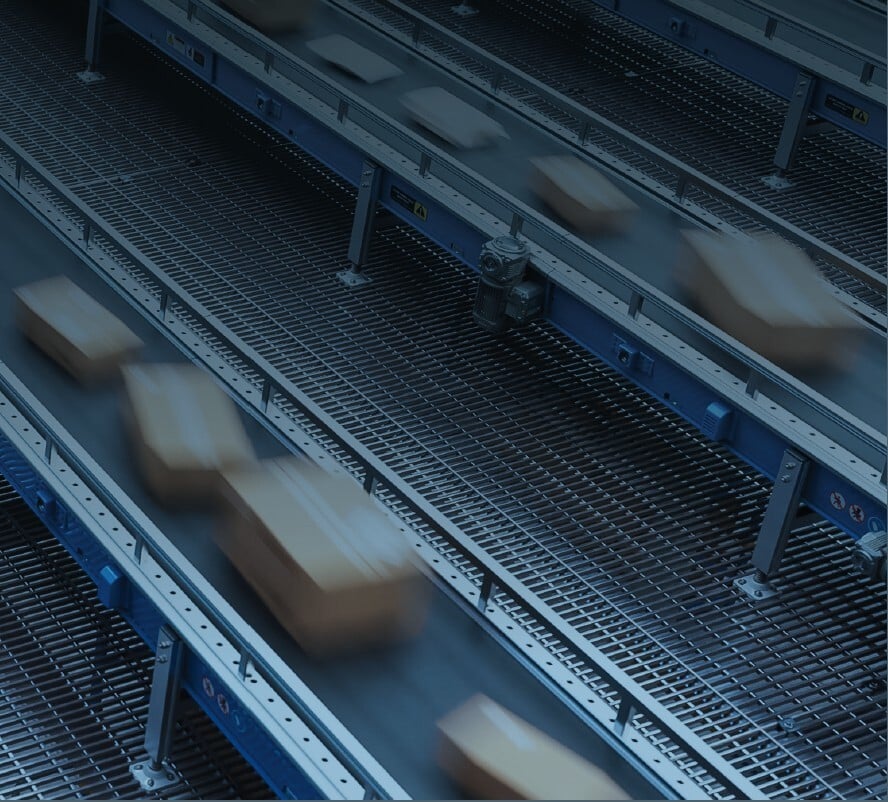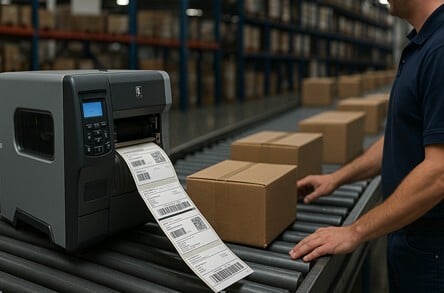If your DCs are nothing more than cost centers that are hampered by unproductive processes and inefficient strategies, you can apply advanced warehouse technologies to squeeze more out of your day-to-day fulfillment operations and improve your bottom line.
Technology may be helping companies work faster and with fewer resources, but the modern-day distribution center (DC) is still some way from achieving optimum productivity.
However, during that time span, the average amount of unproductive time per 8-hour day has increased from 15 minutes to 22 minutes. Using order mispicks as a benchmark—and with companies reporting approximately 134 mispicks per week—the total cost of mispicks is $400,000 annually, according to the recent Honeywell report, Unlocking Hidden Cost in the Distribution Center.
Realizing that no one can afford to waste valuable time or dollars in today’s competitive business environment, more organizations are turning to their logistics and DC managers to fix these and other productivity problems.
Nearly eight out of 10 (79%) managers have been tasked with finding cost savings from existing operations. The amount of cost-savings managers have been tasked with finding is not minimal. In fact, most have been asked to find an average of 19% in cost reductions in their DC operations, according to the Honeywell report.
With more distribution executives reporting directly to their CFOs, these executives are being asked to help drive their organizations’ bottom-line profitability. Any time you reduce inefficiencies and drive costs out of a cost center like a DC, those actions can significantly impact the shipper’s bottom line.
In this article, we’ll explore the DC related productivity challenges that companies are facing, and the ways in which unproductive time in your DC might be costing you more than you think.
The Many Faces of Unproductive Time
Unproductive time takes on many different faces in the distribution environment, where both direct work (handling merchandise, picking orders) and indirect work (cleaning activity, empty pallet collection and breaks/lunches) can all impact an operation’s overall productivity levels. Spread over many people, shifts, and/ or locations on an annual basis even seemingly minute spans of unproductive time can add up to significant financial losses for employers.
In the DC, unproductive time can also be traced to bad processes and methodologies. Performing a specific function repeatedly, but in an incorrect or inefficient manner, for example, can also hamper productivity. For this reason, Honeywell recommends frequent “health checks” and refresher training sessions for employees who play a key role in ensuring smooth workflow processes and as little unproductive time as possible. They also recommend looking at the end-to-end processes, reviewing quantitative studies, and examining potential technology/tools that can help streamline processes and reduce unproductive time.
On average, the DC that employs at least 50 workers loses close to 3,000 hours of productivity in any given year. Breaking those numbers down, 48% of companies believe that there is up to 15 to 22 minutes of unproductive worker time available within the average 8-hour shift. In many cases, companies are turning to technology to help solve the problem.
In fact, 89% of managers believe that investment in new technology would enable time savings and improve worker productivity, thus significantly reducing these lost hours. Voice technology, for instance, is helping operations pick more accurately, utilize hands-free options, improve employee focus, and save money—as much as $300,000 over previous solutions in a small DC operation.
Wanted: Double-digit productivity gains
Honeywell’s experience shows that the operation that moves from a manual or paper-based DC management approach can easily expect 20% productivity improvements by switching to automated processes.
In some cases, these changes are being driven by customer demands and complaints. And while the top 5% to 10% of companies are investing in continuous improvement projects, many more operations have largely chosen to ignore the perils of decreasing DC productivity.
“A lot of companies just do what they have to do to meet their fulfillment obligations for the day and then be done with it,” says Stubbs. “They’re not really focused on how to do things better or be more productive over time in a strategic manner.”
This can be a costly oversight, as Honeywell’s global survey found. “They’re throwing people and technology at the problem in a Band-Aidlike fashion,” Stubbs continues, “but they don’t always look at the root cause and how to mitigate it.”
For technology to have a positive impact on productivity, it must be married with good processes. In other words, simply layering good technology on top of bad processes doesn’t work. If, for example, you implement a new system, but continue to rely on paper or poor methods and procedures to manage your DC operations, then you won’t get the full benefit of the technology investment.
A better approach is to utilize workflow solutions that are developed with best practice methodologies, and that can be applied efficiently—and then honed accordingly over time—within the distribution environment.
Following the paper trail
Any time Honeywell works in a DC to help ferret out inefficiencies and improve productivity, they start by looking around for paper. “If I see any paper documents, pick lists or picking labels being used on the DC floor,” says Stubbs, “I know they’re probably associated with an unproductive, inaccurate, paper-based process.”
These paper-based processes are also onerous from a training standpoint, and particularly for companies that have global and/or diverse operations. “It’s nearly impossible to print out all of the materials in multiple languages or expect everyone to understand and follow one language,” says Stubbs, who adds that roughly 25% of people working in any given DC in North America, France, Germany, or the U.K. do not speak the native language.
“When someone can’t get up to speed on accuracy and efficiency quickly, it creates an even bigger problem for DCs that are striving for better productivity,” adds Stubbs.
Paper also inhibits accuracy and, in many cases, leads to low morale among workers and safety related issues. An employee who is constantly shuffling through paperwork and stopping mid-task to manually record data must direct his or her attention away from the work at hand. For someone who is navigating an 8-hour shift in areas where automation, conveyors, and forklifts are in use, the consequences of that distraction can be potentially dangerous.
Once a company’s paper trail has been identified and assessed its potential impacts on productivity, they then look at the types of materials that the facility is handling. A pallet-based operation that’s using radio-frequency (RF) scanning to manage inbound and outbound shipments, for example, is probably more efficient as a whole than the DC that’s handling individual cases (or single picks sent directly to customers).
Many times this single pick DC will try to use paper or RF to get the job done instead of implementing workflow technologies like handheld technologies or hands-free wearable devices, voice, and mobile printers. “In these instances,” Stubbs says, “technology adds an incremental layer of accuracy and productivity that operations won’t get from more traditional paper-based methods.”
When assessing their productivity levels, DCs should also consider error rates—both for inbound and outbound freight. Whether the receiving process is handled accurately (or not), for instance, can have a ripple effect across the entire supply chain. In fact, receiving is often seen as one of the most critical processes in the DC for driving productivity improvements
When orders are received correctly, inventory balances are updated, and new orders are generated and fulfilled based on those inventories, filled rates are high. When just one of those three processes goes awry, orders get shorted, shipments are delayed, and customer service is negatively impacted.
“Everyone has their sights set on the perfect order, but when the order isn’t picked right, then that’s where the highest revenue losses come into play,” says Stubbs. Honeywell’s survey estimates that businesses are seeing $400,000 annually in mis-pick losses. “That’s a pretty large number that can be reduced by marrying good processes with today’s advanced workflow technologies like voice, handhelds, mobile printers, and 2D barcode scanning.”
It isn’t getting any easier
With e-commerce continuing to grow by leaps and bounds, customer-driven demand for speedier delivery with later order cut off times, coupled with visibility and flexibility means the omni-channel distribution environment is becoming increasingly complex. The operations that aren’t taking the time to optimize their DC workflow processes now could find themselves in real trouble.
As the sheer velocity of orders moving through the typical fulfillment center continues to grow, operations will either have to add more space and/or workers—both costly endeavors—or optimize their workflows in a way that allows them to do more in the same amount of space and with the same number of employees.
“If companies can’t meet customer demands, they’ll have to deal with lost sales, returned goods, and other costly impacts,” says Stubbs. “Eventually, these operations will fall behind the curve and be overwhelmed by their competitors.”
At AbeTech, we have extensive experience in successfully solving complex problems for a variety of e-commerce and omnichannel businesses. We’re committed to solving your DC accuracy challenges through relentless innovation and a desire to deliver best-fit solutions. We provide access to the actionable insights and information you need to transform your business.
Our expert assessment teams will partner with you to understand your unique business requirements and identify where opportunities exist to optimize your workflows and increase efficiencies within today’s competitive retail climate.
Take your DC to the next level!
